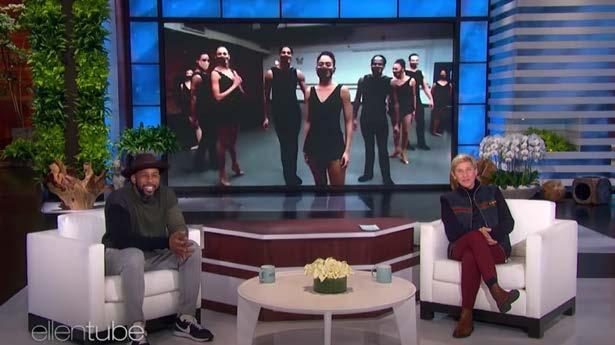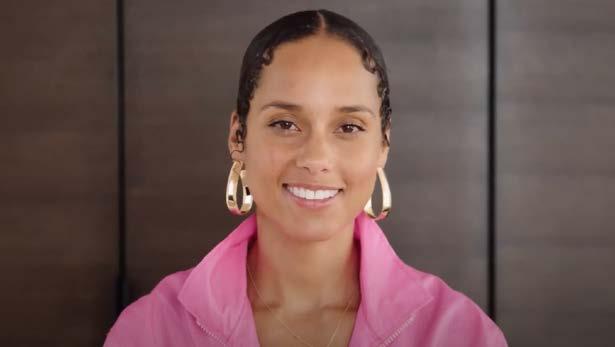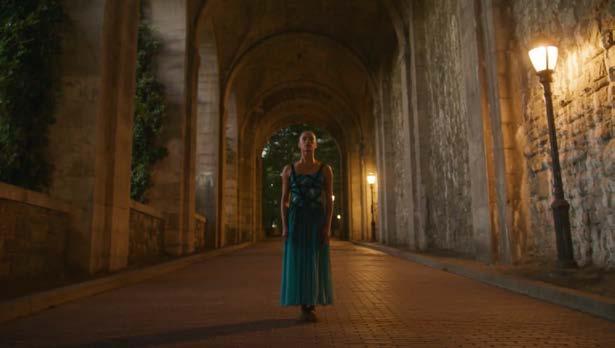
2 0 2 6 – 20 2 7 S E A S O N
WHAT DOES DANCE GIVE YOU?
THE FREEDOM TO BE WHO YOU ARE AND DO WHAT YOU WANT TO DO .
ARTHUR MITCHELL Co-Founder, Dance Theatre of Harlem
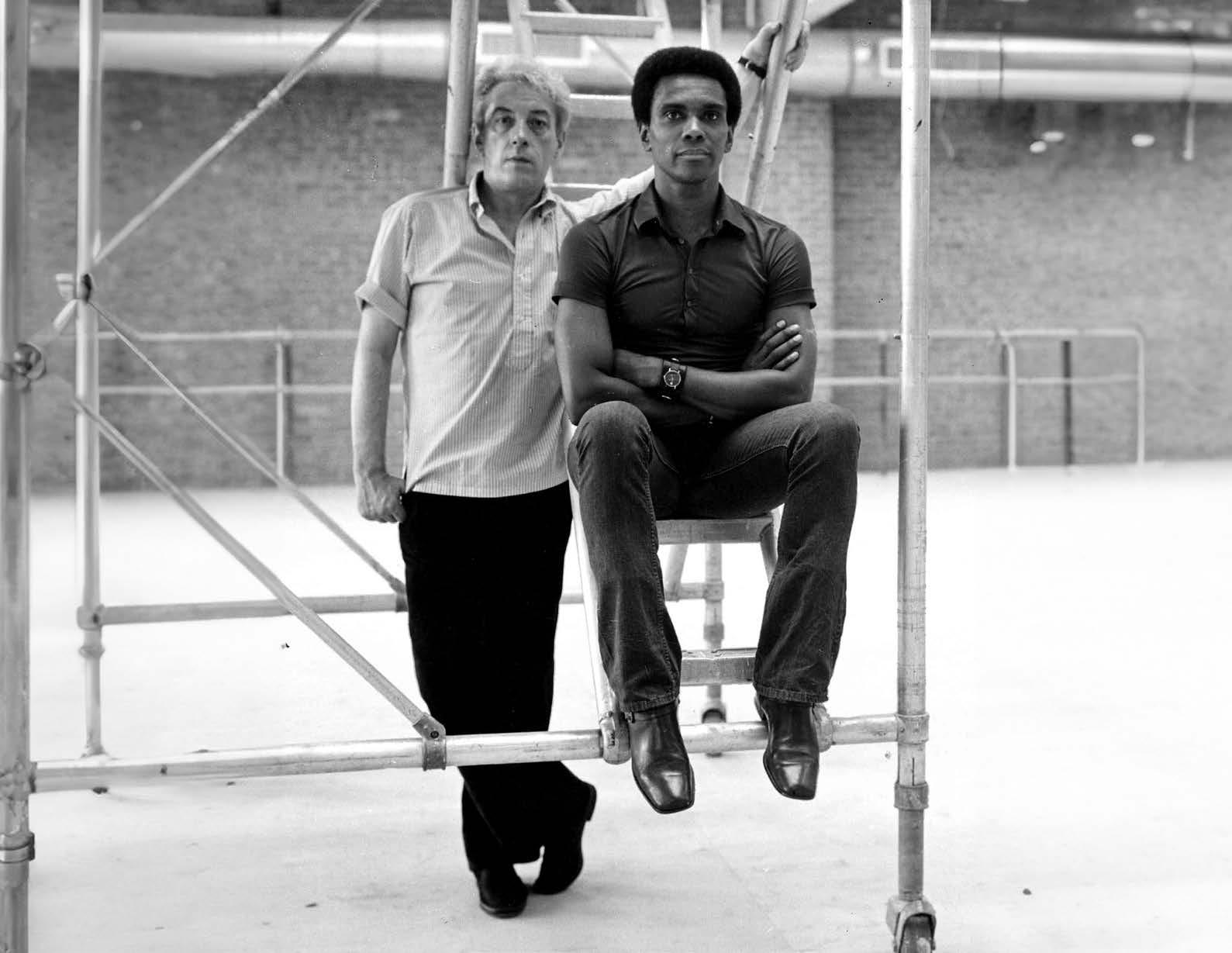
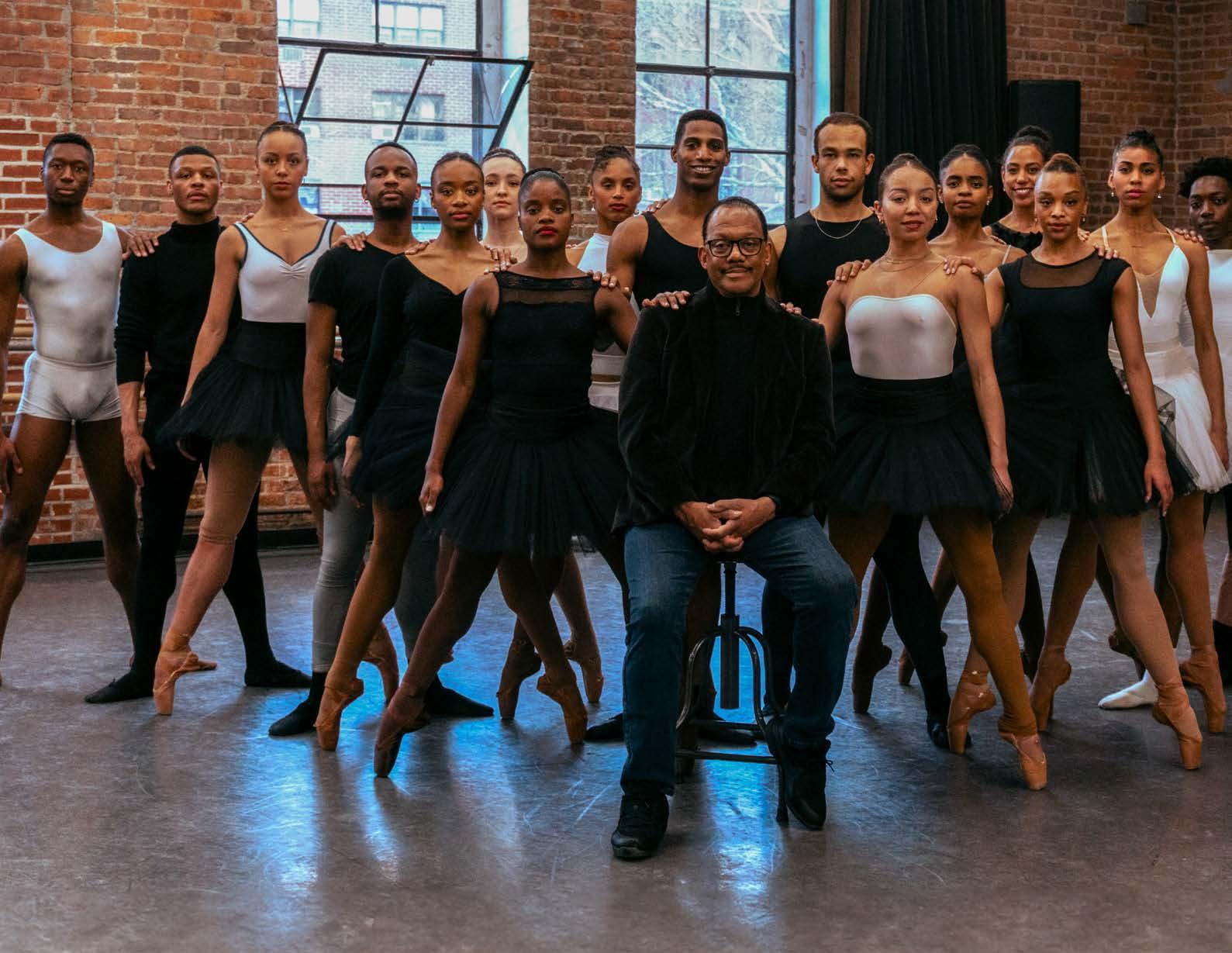



2 0 2 6 – 20 2 7 S E A S O N
WHAT DOES DANCE GIVE YOU?
THE FREEDOM TO BE WHO YOU ARE AND DO WHAT YOU WANT TO DO .
ARTHUR MITCHELL Co-Founder, Dance Theatre of Harlem



Dance Theatre of Harlem stands as a dynamic force in the ballet world, captivating audiences both nationally and internationally. Our repertoire is a thrilling blend of treasured classics, neoclassical masterpieces by George Balanchine and artistic director Robert Garland, and cutting edge contemporary works that embody founder Arthur Mitchell’s belief that ballet is for everyone. Through electrifying performances, community engagement, and arts education programs, Dance Theatre of Harlem champions the power of the arts to inspire and empower.
Since our founding in 1969 by Arthur Mitchell and Karel Shook, Dance Theatre of Harlem has been hailed as “one of ballet’s most exciting undertakings” (The New York Times). Inspired by the work of The Reverend Dr. Martin Luther
King, Jr., Mr. Mitchell established a school to provide Harlem’s youth with the opportunity to explore dance and the allied arts. Now celebrating over fifty-five years of excellence, DTH has evolved into a globally renowned ballet company, setting new standards in the performing arts and leaving an indelible mark on the world stage. Our extraordinary legacy continues to open doors for creative expression and artistic brilliance. Explore our rich history and join us in celebrating the transformative power of dance.

Arthur Mitchell received the Sir Laurence Olivier Award for Creole Giselle , 1984. (top left) / Virginia Johnson and Lowell Smith in Fall River Legend , 1983. (top right) / Lorraine Graves as Myrta, Lowell Smith as Hilarion Guidry and the DTH Company as the Wilis in Creole Giselle . (bottom)
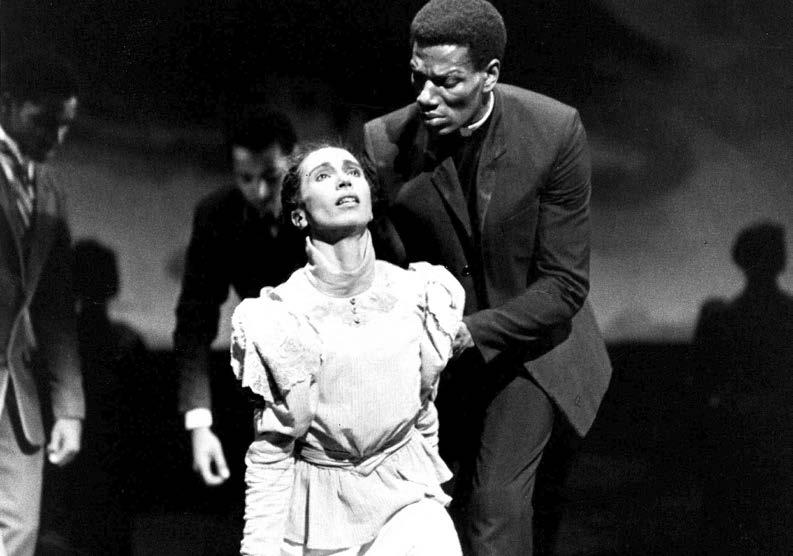
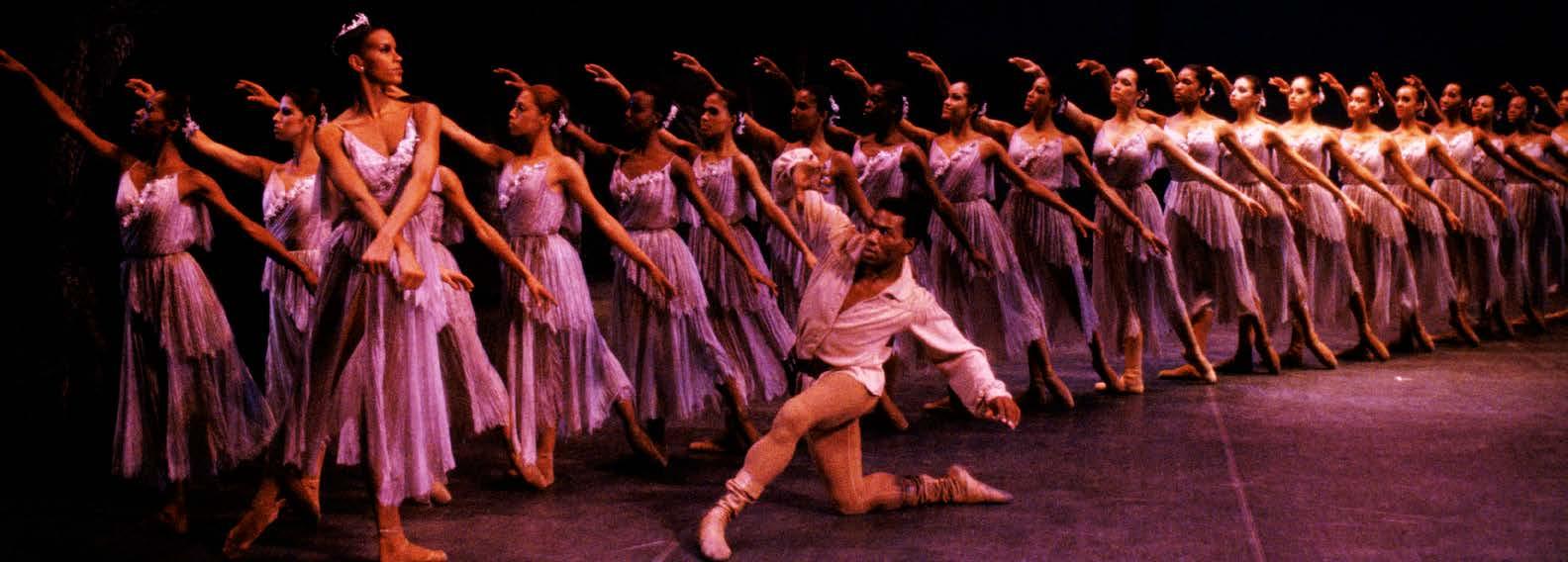
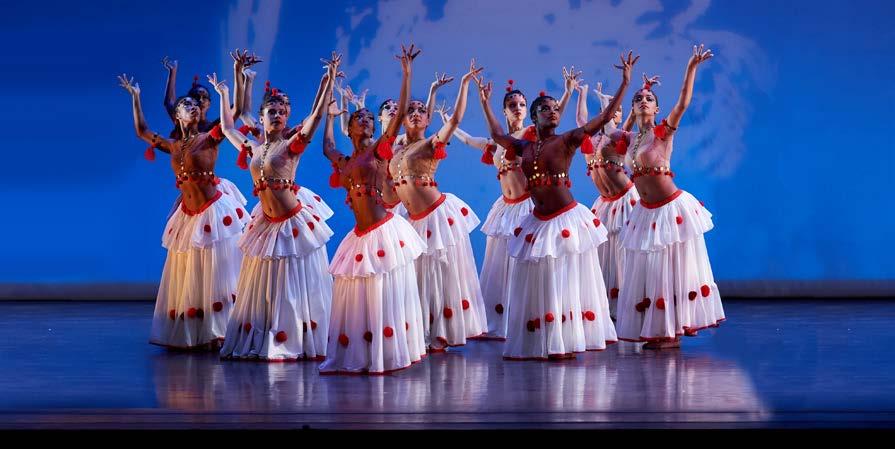
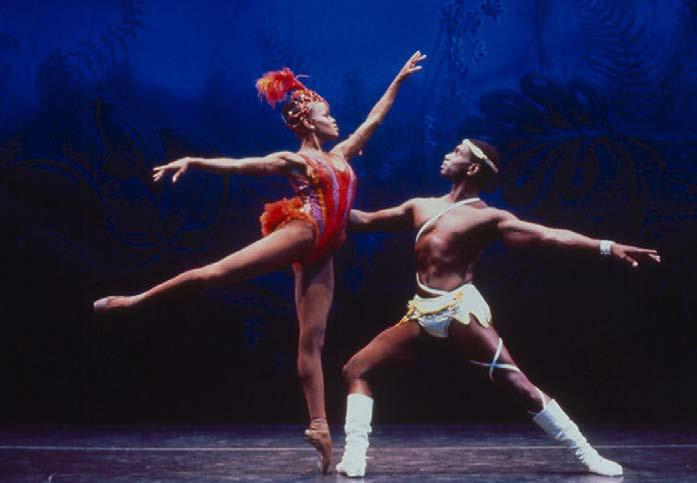
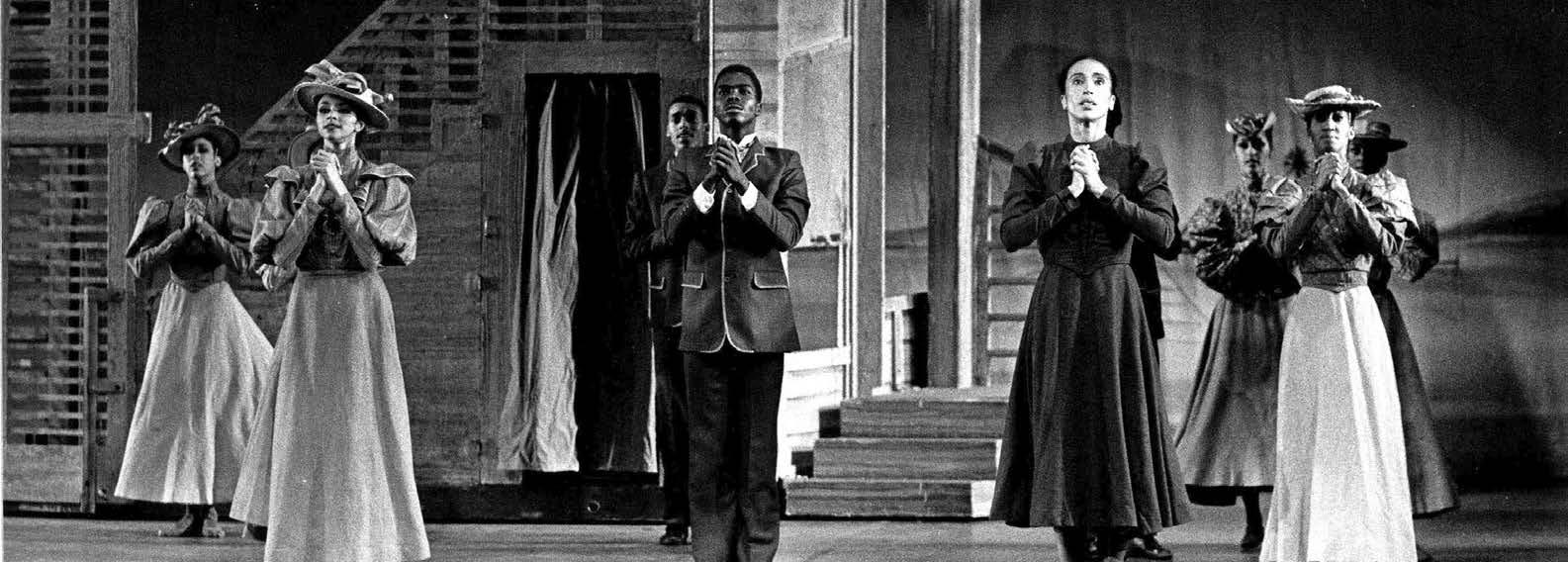
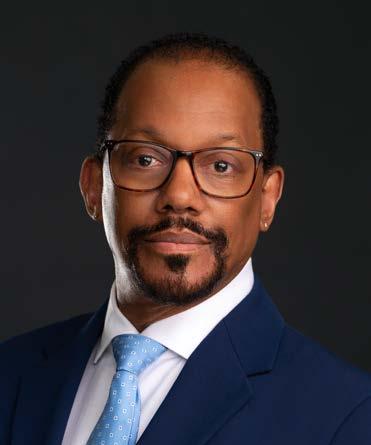
Robert Garland
Artistic Director
Artistic Director Robert Garland was a member of the Dance Theatre of Harlem Company from 1985-1998, achieving the rank of principal dancer. After creating a work for the DTH School Ensemble, Arthur Mitchell invited Robert Garland to create a work for The Dance Theatre of Harlem Company and appointed him the organization’s first Resident Choreographer. Before becoming DTH Artistic Director, he was Director of the Dance Theatre of Harlem school. In 2023, Mr. Garland was appointed the Artistic Director of Dance Theatre of Harlem. His works for the company include Higher Ground, New Bach, and Return, among others. Many are in his signature postmodernurban-neo-classical style.
In addition to choreographing several ballets for DTH, Mr. Garland has also created works for New York City Ballet, Britain’s Royal Ballet, Oakland Ballet and many others. His commercial work has included music videos, commercials and short films, including the children’s television show Sesame Street, a Nike commercial featuring New York Yankee Derek Jeter, the NAACP Image Awards, a short film for designer Donna Karan, and the “Charmin Cha-Cha” for Proctor and Gamble. Mr. Garland holds a Bachelor of Fine Arts Degree from the Juilliard School in New York City.
Photos by Nir Arieli.
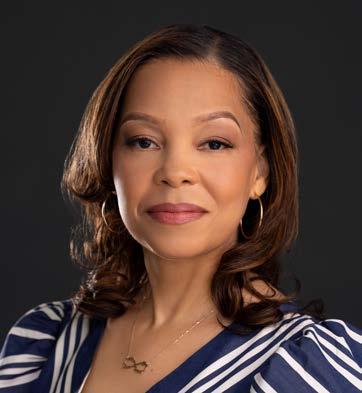
Anna Glass
Executive Director
Click here for complete listing of Artistic Staff and Company Artists.
Anna Glass has been involved in the performing arts as both an artist and arts administrator for over twenty-five years. She currently serves as the Executive Director of the Dance Theatre of Harlem, recently named an “American Cultural Treasure” by the Ford Foundation and recent recipient of $18.5 million combined gifts from the Mellon Foundation, Ford Foundation, and MacKenzie Scott and Dan Jewett – the largest gift amounts in DTH’s history. Together with Artistic Director Virginia Johnson, Anna co-launched a collaborative initiative addressing racial inequity in ballet – The Equity Project. In May 2013, she began her own endeavor dedicated to preserving and documenting the legacies of prominent Black artists and cultural institutions, and reinterpreting those legacies onto multiple platforms, including live performance. She recently produced Carmen de Lavallade’s
newest solo show Carmen de Lavallade: Life of a Legend for Jazz at Lincoln Center and prior to that As I Remember It – an intimate portrait of this legendary artist, which toured across the country. Anna has also served a consultant providing strategic planning and fundraising guidance to various non-profit arts organizations across the country and has served as an advisor for the DeVos Institute of Arts Management supporting New York City non-profits. Anna currently serves on the Board of Directors for the Association of Performing Arts Professionals and the International African American Museum in Charleston, SC. Anna received her undergraduate degree from Oberlin College and her JD from the University of Dayton School of Law. She is also a licensed attorney in the State of New York. Anna lives in Harlem with her husband and daughter.

Ballet can refer to many things in this day and age, but to perform Balanchine well is still what it’s all about — especially for Dance Theatre of Harlem.
““...DTH is poised to continue to redefine classical ballet as a vital, relevant artform for the next 50 years and beyond.”
—Playbill.com
“...Dance Theatre of Harlem’s latest commissions offer a different future, one where ballet is more daring and more perceptive than ever before.”
—Broadwayworld.com
“...this beloved company has found its footing.”
The New York Times
Photo by Nir Arieli.
“A night at the ballet can turn into lifelong inspiration when Dance Theatre of Harlem comes to town. The excitement the company generates onstage has a way of radiating into every corner of the dance community...”
—The Miami Herald
“It’s rare to encounter a dance company that achieves such a perfect balance between pushing the limits of the art form and grabbing the audience. In staying true to its course, Dance Theatre of Harlem arrives at brilliance.”
St. Louis Post-Dispatch
“This is not what you expect, but this is what’s possible.”
—The New Orleans Advocate
“Take any chance you can get to see this gem of a company perform!”
—Broadwayworld.com
“One constant has been the excellence of resident choreographer Robert Garland … Garland never seems derivative...”
Financial Times
“To this day, DTH remains an oasis of diversity, fully committed to its original mission of showcasing black excellence.”
—Dance Magazine
This was the most exhilarating performance I have been to in many years. I had tickets last year but could not attend. I will never miss a DTH performance again.
I came with my 5 year old grandson so that he might see people of color in starring roles ...and as an opportunity for him to see what was possible for him to aspire to. This came after a negative comment re. skin color had come up at school. We sat in the front row and he was engaged the entire time and did not want to leave at either intermission...even though this was a late night for him. Thank you for giving him a beautiful experience of his world and its possibilities.
My 6-year-old granddaughter thought it was amazing. And has asked me to buy tickets for the next year’s performance.
Mind blowingly beautiful...I was transfixed for the entire performance... wish I could see DTH every year at least once!
Incredible, as always. I cried at each piece — the beauty, joy, passion, strength and grace from each dancer and the entire troupe brought the choreography to life in a touching and powerful way. Please promise to come back next year!
The opening number took my breath away. The contrast in the score between James Brown and Aretha Franklin took me on an emotional journey. And the performers danced with humor, brilliance, grace. It was everything.
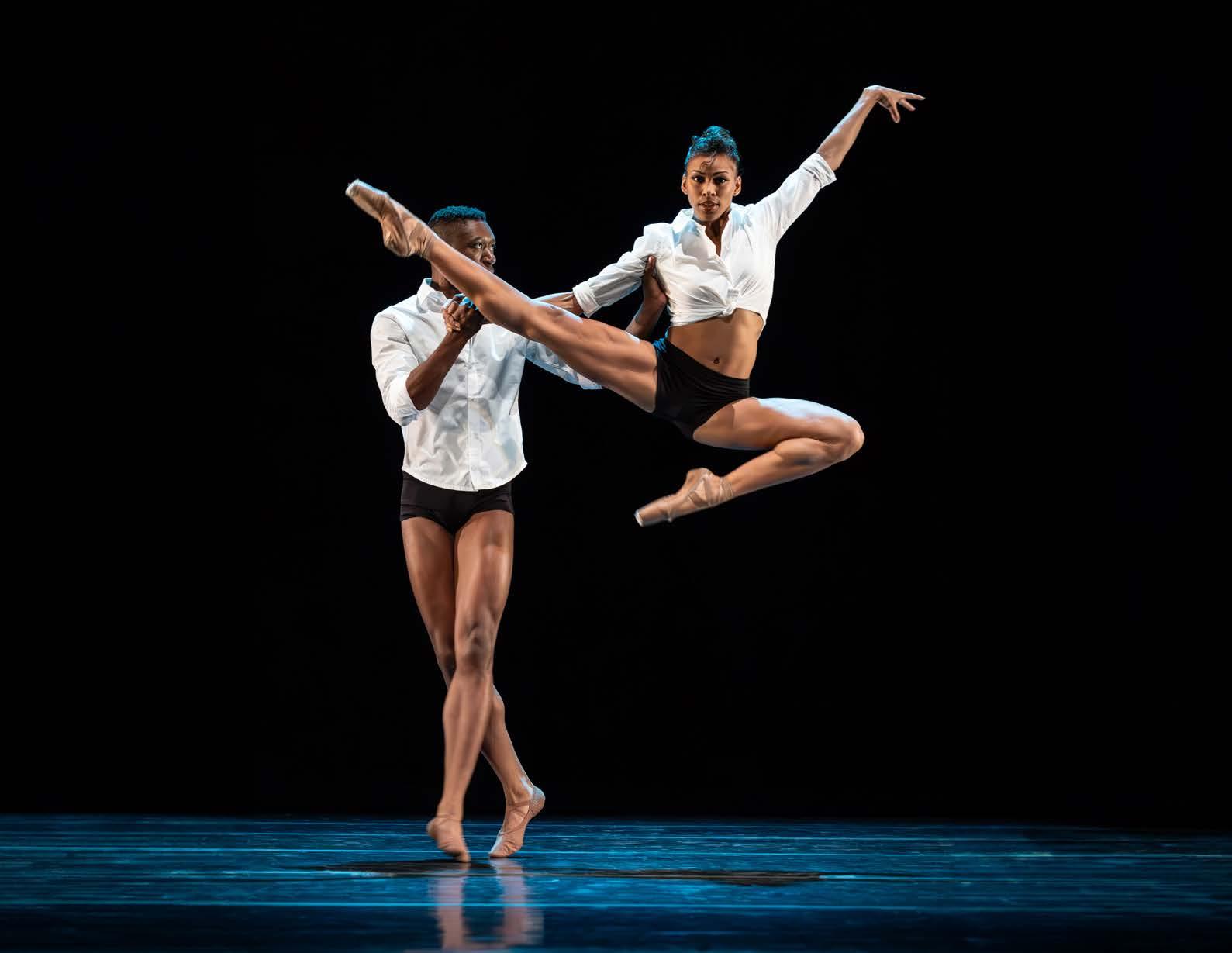

Choreography:
George Balanchine
Music:
Pyotr Ilyich Tchaikovsky
Allegro Brillante is characterized by what Maria Tallchief (the ballerina on whom the bravura leading role was created) calls “an expansive Russian romanticism.” The music’s vigorous pace makes the steps appear even more difficult, but the ballet relies on strong dancing, precise timing, and breadth of gesture. Balanchine said: “It contains everything I know about the classical ballet in 13.” (Source: The George Balanchine Trust)
“I will never, ever let go of our Balanchine roots,” Garland said. “That is something to me that’s a nonnegotiable in terms of our artistic legacy and cultural background.”—The New York Times
Click here to watch Allegro Brillante
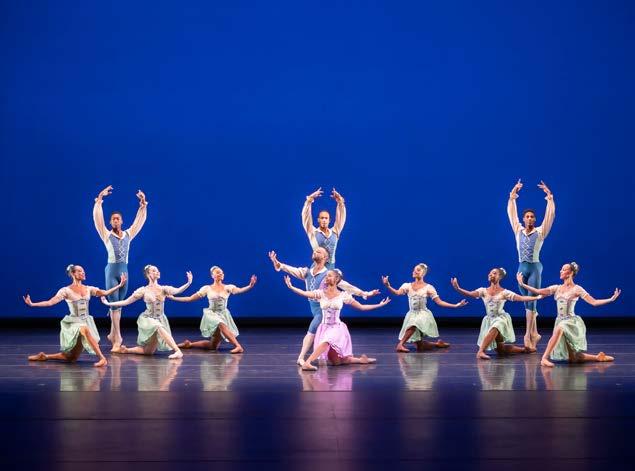
“They deliver the work’s many interwoven garlands and close canons with a confectionary exactitude that is composedly thrilling.”
The New York Times
Choreography:
George Balanchine
Music: Gaetano Donizetti
George Balanchine’s Donizetti Variations is a lively, effervescent series of dances set to Donizetti’s Don Sebastian opera. While the tone is bright and cheery, the technical demands on the dancers are anything but, showcasing two bravura performers in a masterclass of elegance and endurance.
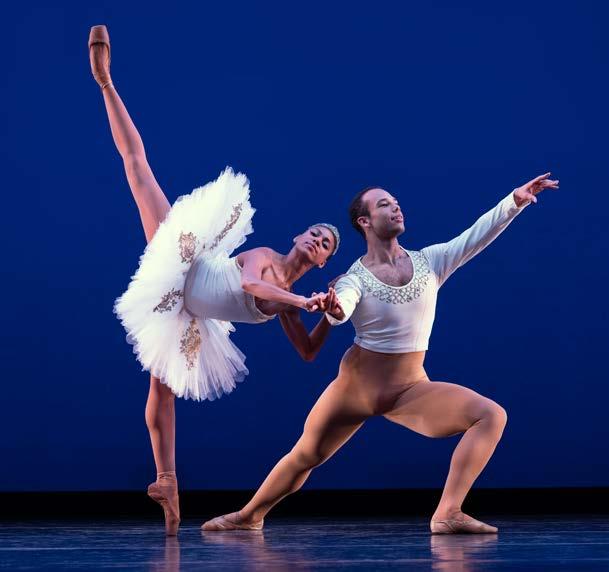
Choreography:
George Balanchine
Music: Alexander Glazounov
Pas de Dix, translated from French, as “a dance for ten,” was born of Balanchine’s fond recollections of his student days in Russia.
Balanchine had danced in Petipa’s original production of Glazunov’s Raymonda at the Maryinsky Theatre, and the spirited last act of Raymonda was seed to this ballet. It is, in fact, the spirit and not the specific which is retained, for Balanchine’s Pas de Dix is a spectacle without story, a series of dances for an ensemble of eight with two principal dancers. Petipa’s original choreography followed the narrative line of Raymonda. (The last act celebrated the nuptials of Lady Raymonda and the Count Jean de Brienne.) Balanchine added a brilliant introduction and conclusion incorporating typically Hungarian folk dance. The classical and ethnic dance styles mingled here are paralleled in Glazunov’s score.
Program note courtesy of Kansas City Ballet.

“Bondara’s, Take Me With You, finds a soulmate in Radiohead’s restless beat, so skilfully employed ... The body language is searingly honest connecting social relationships and inner feelings.” Danza
Choreography:
Robert Bondara
Music: Radiohead
Robert Bondara on creating Take Me With You:
The catchy percussion beat of the Radiohead song “Reckoner” became the first trigger and source of inspiration for movement language and choreography. Getting deeper into the creative process and vague lyrics of the song in a very personal way, the content of the choreography got closer to reflecting about our existence, our efforts to grasp the meaning of life despite “bittersweet distractors.” What is essential for the piece is metaphysical experience, an elusive atmosphere determining the relationship between the dancers on the stage.
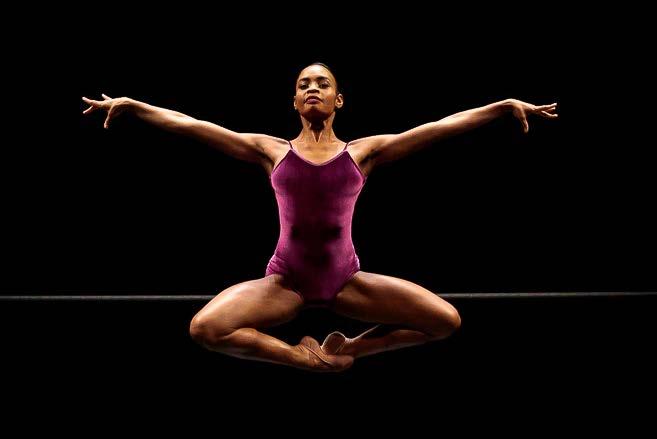
“they performed it with go-for-broke power and presence, as well as subtlety and finesse … all-consuming and exhilarating to watch.”
The Berkshire Edge
Choreography: William Forsythe
Music: James Blake
Blake Works IV (The Barre Project), a commission for the Dance Theatre of Harlem, is the latest installment in William Forsythe’s continuously evolving work The Barre Project. The work derives its inspiration from the propulsive and rigorously structured songs of composer James Blake, whose work appears primarily in the popular music idiom.
The Barre series began in 2021 at the height of the pandemic as a filmed dance that was streamed to a global audience facing the restrictions on live performance at the time. The live stage version for Dance Theatre of Harlem features newly choreographed sections that highlight the diverse and formidable talents of the ensemble and is a version of the ballet that is unique to this company alone.
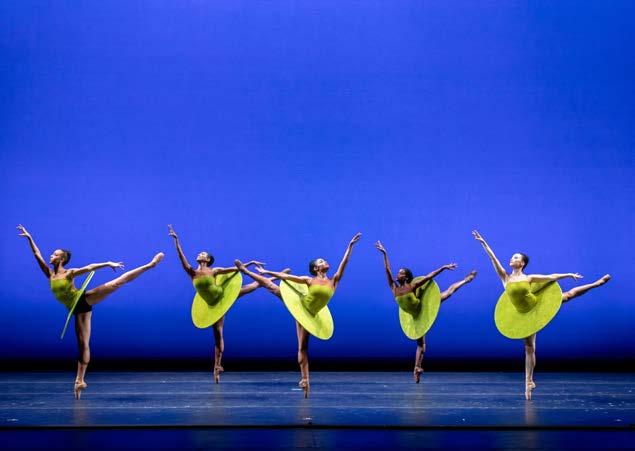
Choreography: William Forsythe
Music: Franz Shubert
Set to the final movement from Franz Schubert’s Symphony No. 9, The Vertiginous Thrill of Exactitude is an affectionate homage to both Petipa and Balanchine in its courtly partnering conventions, compositional structure (solo variations set amongst pas de deux, pas de trois, and ensemble sections), and speedy, precise allegro work. The Vertiginous Thrill of Exactitude nonetheless belongs utterly to our time in its overt celebration of the dancers’ ability to make technical difficulty into a triumph of physical mastery and in its self-aware embodiment of a whole tradition of dance.
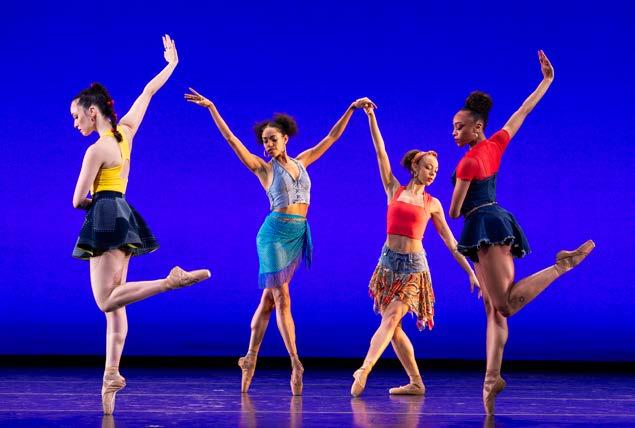
Choreography:
Robert Garland
Music: Jill Scott, Cymande, Caron Wheeler, and Brass Construction
The Cookout is a bold work in Robert Garland’s signature postmodern, urban, neo-classical style. Blending classical ballet with the rhythms of Black social dance, Mr. Garland explores resilience in four movements. From the dignity of work and culture to the sorrow that impacts all of humanity, The Cookout ultimately culminates in a celebration of joy.
Set to a soul-stirring playlist featuring music from Jill Scott, Cymande, Caron Wheeler, and Brass Construction, The Cookout channels the dignity and passion of Harlem’s legacy. The Cookout is a vibrant work that speaks to our shared struggles and triumphs, offering a timely reflection of our strength and capacity to carry on. Don’t miss this electrifying centerpiece of DTH’s New York season—a celebration of community, culture, and boundless spirit.

Best Dance
of 2022,
The New York Times:
“In “Higher Ground” Mr. Garland has created something rare in classical dance: a ballet with a message…. a marvel of a work that shows off Mr. Garland’s many choreographic gifts, from his sparkling musicality to his ability to seamlessly weave classical ballet with influences from modern and social dance.”
Choreography: Robert Garland
Music: Stevie Wonder
Created in celebration of DTH’s 50th anniversary, Higher Ground explores political parallels between the 1970s and today through the music of Motown icon Stevie Wonder. In the words of Mr. Garland, “It has been said that African American people are the conscience of America. If that be so, then Stevie was and still is the conscience of Black America. The music’s cultural relevance and timeless messages are crucial to understanding art that can address social issues.”
Click here to watch an excerpt from Higher Ground

Choreography:
Robert Garland
Music: Johann Sebastian Bach
Created by Dance Theatre of Harlem Artistic Director Robert Garland for the Company, New Bach was first performed in September 2001, immediately after 9/11. The style of neoclassical ballet created by George Balanchine and cultivated at Dance Theatre of Harlem by Cofounder Arthur Mitchell is at the center and essence of New Bach. It is a supreme expression of Garland’s tongue in cheek description, “post-modern-urban neoclassicism,” infusing popular vernacular dance and Africanist influences within a framework of George Balanchine’s neoclassical ballet influences.
Click here to watch New Bach
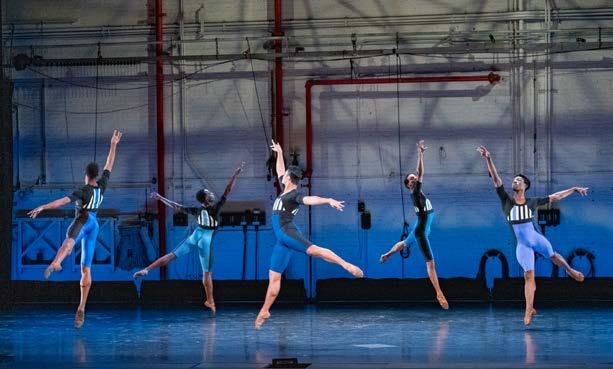
“Shadowed beneath Thy hand, May we forever stand, True to our God, True to our native land.”
(
Lift Every Voice and Sing) Click here to
Nyman String Quartet No. 2
Choreography:
Robert Garland
Music: Michael Nyman
“This work is dedicated to the memory of two men whom I admire: John Wesley Carlos, former track and field medal winner at the 1968 Summer Olympics, well known for his triumphant salute upon the winners podium that year, and Dance Theatre of Harlem’s Founder and Artistic Director Emeritus, Mr. Arthur Mitchell (1924–2018), whose similar stand for his people, his community, and the arts “has brought us thus far on our way”
Robert Garland
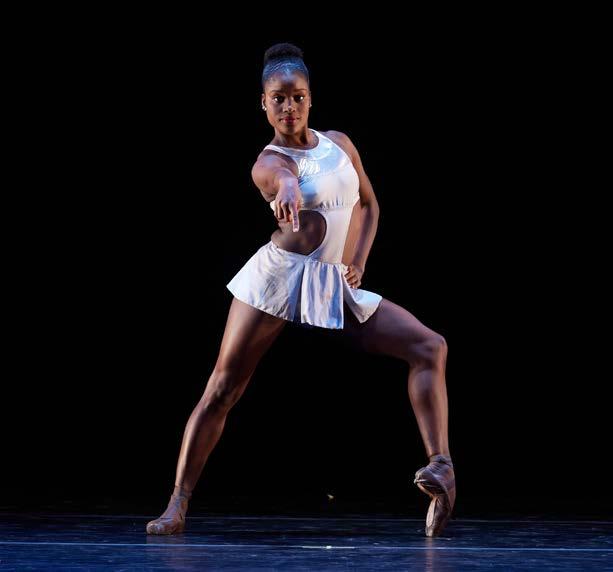
Choreography:
Robert Garland
Music: Aretha Franklin; James Brown
Return was choreographed for Dance Theatre of Harlem’s 30th anniversary. Choreographer Robert Garland calls the ballet’s style “postmodern urban neoclassicism - an attempt to fuse an urban physical sensibility and a neoclassical one.” Staged for 12 dancers to songs performed by James Brown and Aretha Franklin, Return is “... a witty fusion of ballet technique and street gait whose irony toward rhythm-and- blues had the audience in stitches.” (The New York Times)
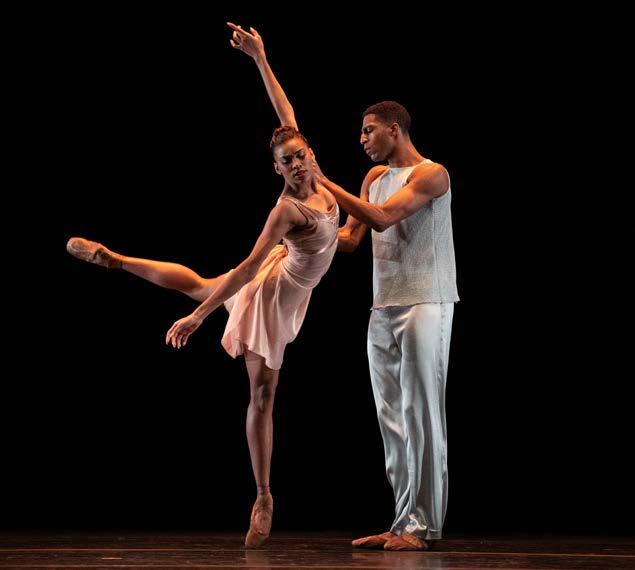
Choreography:
Jodie Gates
Music: Ryan Lott
Fall into the passage of time in Jodie Gates’ new ballet, Passage of Being, an exploration of life’s fleeting moments set on Dance Theatre of Harlem’s extraordinary dancers. This circular, and physical work unfolds in three cinematic movements set to the evocative music of Oscarnominated composer Ryan Lott (“Everything Everywhere All at Once”). Shifting perspectives and the bittersweet beauty of time’s swift journey are brought to life through Gates’ expressive choreography and inventive lighting by Michael Korsch with elegant costumes by Martha Chamberlain. At its heart of this elliptic ballet is the majestic and haunting Son Lux song, “Don’t Say It’s Too Late.” Gates weaves these elements into a poignant reflection on love, connection, and the power of the present. Don’t miss this visually deeply moving new work.
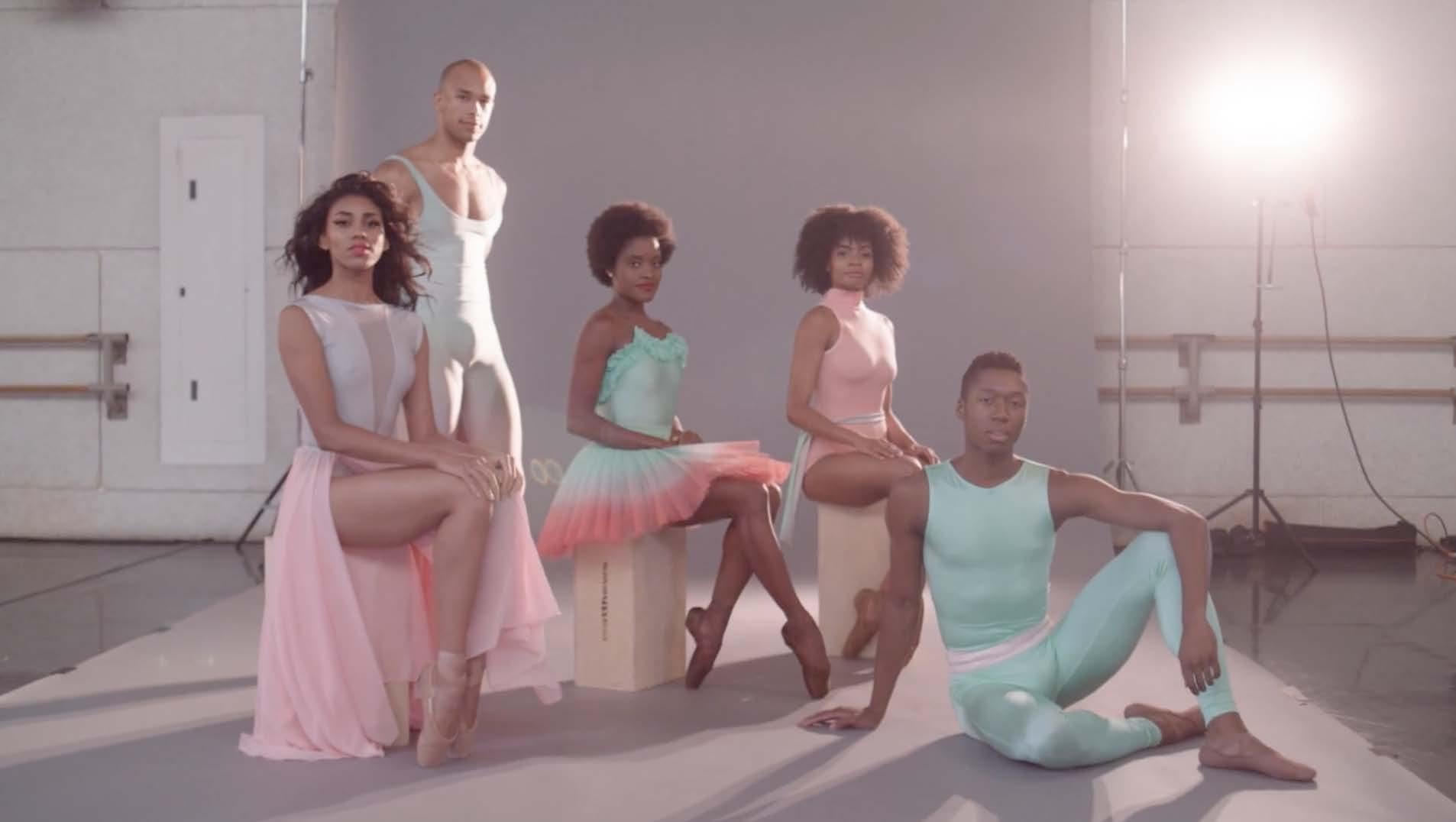
DTH: Where Legacy Meets Bold Vision

